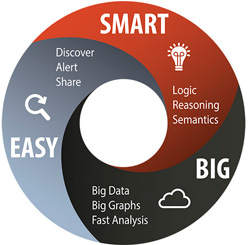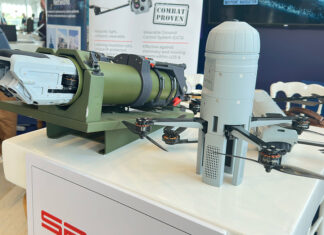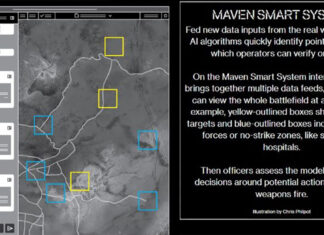
The U.S. Air Force is developing an automated targeting workflow that would help planners accelerate the targeting cycle, while reducing operational risks of fratricide and collateral damage, by increasing processing automation and precision of targeting products supported by the new “CATALiST” targeting platform.
“Today’s targeting enterprise lacks efficient workflow and data hand-offs, causing lost time, redundancy of effort, and lesser quality products and effects across air, space, & cyberspace.” An air force documents stated, asking industry to offer technological workflow solutions to expedite the process. Today, most of this process is operated manually, particularly the preliminary planning and sensitive phases of collateral damage and battle damage assessments. Lacking efficient analytical tools, these phases are prone to human errors and require extensive, lengthy processing.
Today’s targeting enterprise lacks efficient workflow and data hand-offs, causing lost time and redundancy of effort

Modus Operandi, a company that delivers Big Data analytics solutions for national security and commercial organizations, has been selected by the U.S. Air Force Research Laboratory (AFRL) to develop such workflow modules for CATALiST.
Under terms of the two-year contract worth under a million US$, the company will develop a system that effectively automates, monitors, and improves the targeting process. The company said the system will be based on Modus Flow, a distributed, semantically-enhanced process automation and knowledge management framework.
CATALiST enables planners and targeteers to prioritise, process and monitor the targeting workflow through a globally distributed, secure enterprise system, that would help targeteers to collect, visualise, assess and automatically retrieve and process data sets relevant to each mission. The process also support the intelligence assessment of the objective, enabling targeteers, planners and commanders to visualise the target area and ongoing operations in its vicinity, at different scales – from tactical to strategic levels.
Aiding the planning process, decision support could be used to assess the damage inflicted to specific elements in each target set and to the objective as a whole. Unlike the present assessment narrowed to kinetic effect only, CATALiST’s assessment would combine the effects achieved by the application of kinetic and non-kinetic weapons – applying Multi-INT information fusion algorithms and cognitive workflow processes that will also support Battle Damage Assessment (BDA). This automated process would also recommend and assign automatic restrike, in case the targeting goals were not achieved.
CATALiST uses “smart” data to optimize the targeting processes, thus shortening the targeting cycle
A unique aspect of the workflow approach implemented by Modus Operandi will be the ability to utilize semantically-enhanced or “smart” data to optimize the targeting processes, thus shortening the targeting cycles. As a result, the CATALiST platform will provides the Air Force Targeting Enterprise (AFTE) with the necessary tools to promote a continuous targeting process—supported by distributed process automation and auditing, with enterprise collaboration capabilities, culminating in the real-time dissemination and discovery of the targeting products through a multi-media Electronic Target Folder (ETF).




















